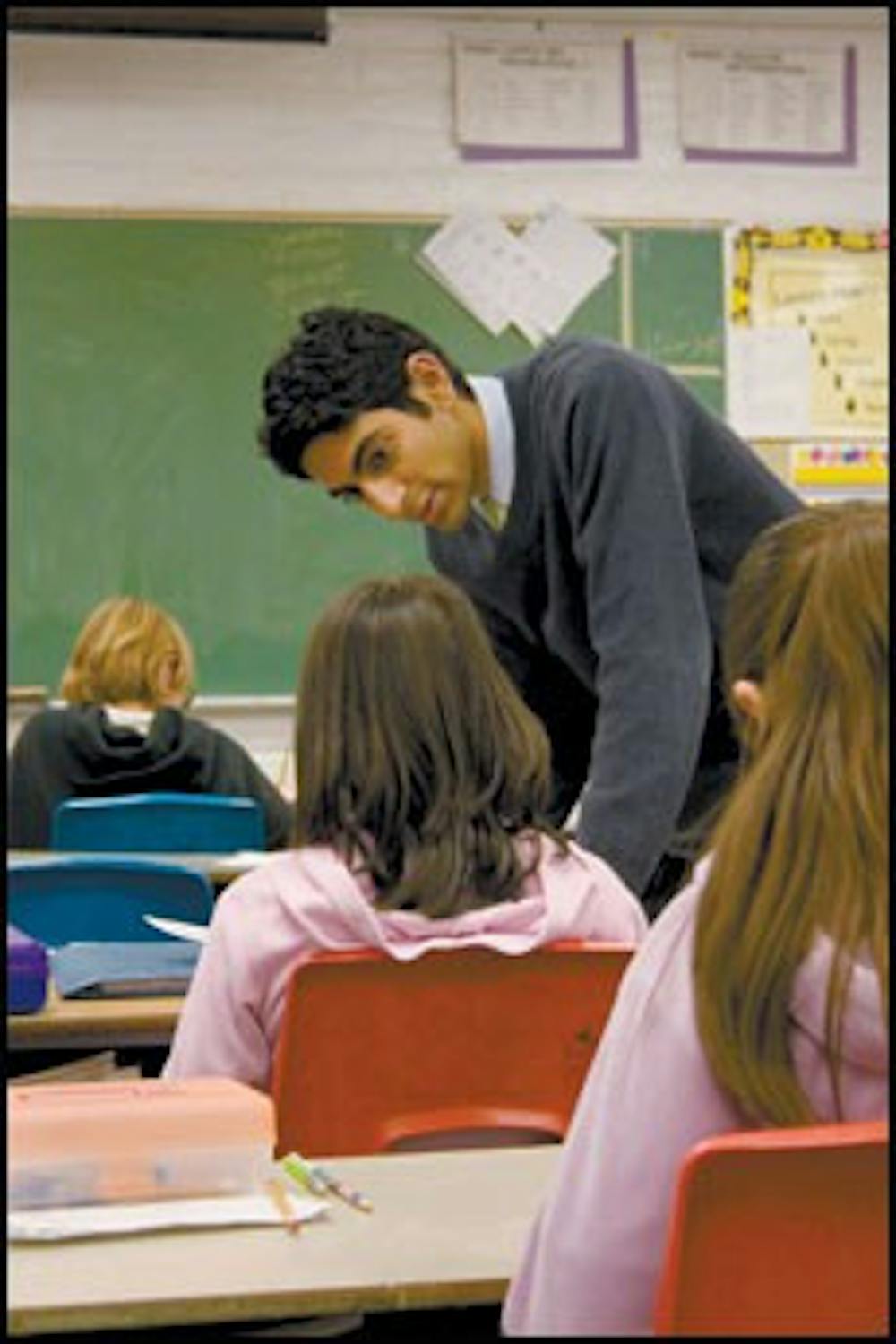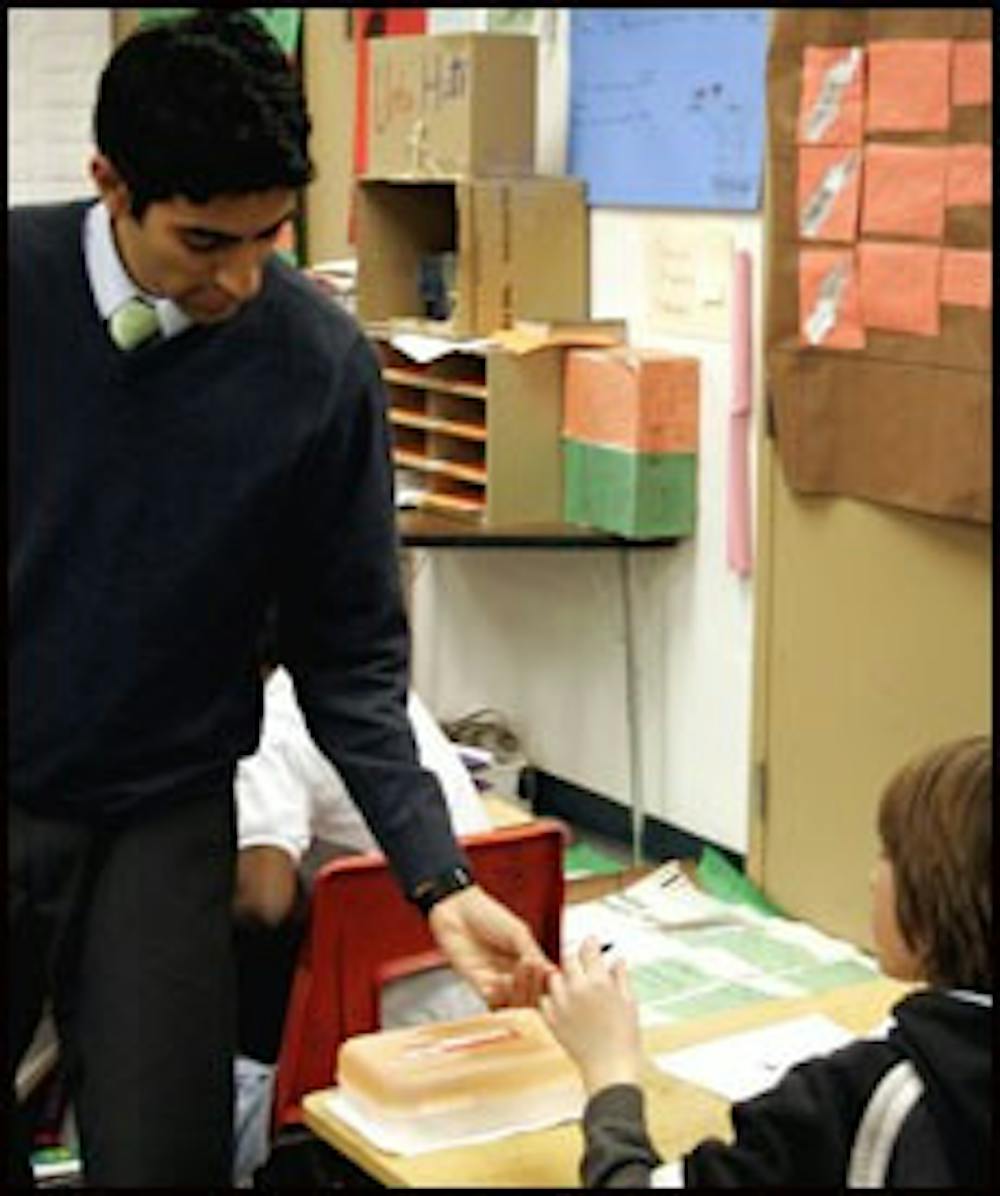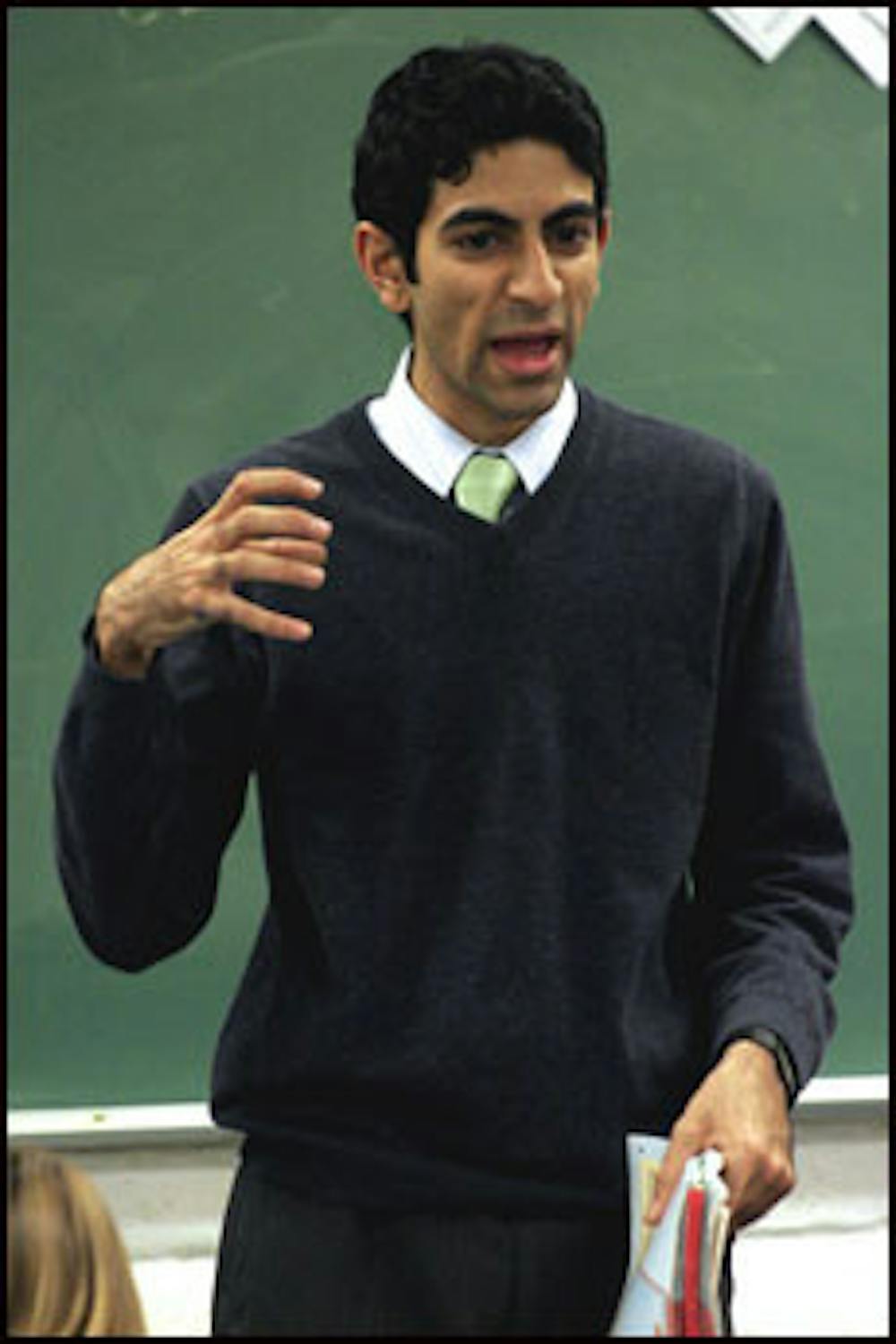In the Roosevelt School District, schools are so poor they can't even afford to pay substitute teachers. If a full-time teacher ever gets sick, they are forced to split the teacher's students into two other classes for the day, packing some classrooms that are already close to full.
As of this article's printing, Arizona is being fined half a million dollars a day by the federal government until it finds a way to educate students who aren't proficient in English.
On Jan. 31, President Bush announced in his State of the Union address that the country is currently experiencing a teacher shortage, especially in the sciences and mathematics. The Arizona's Instrument to Measure Standards, or AIMS, test is still a hotly debated topic, even after its inception eight years ago. Government officials, researchers and parents are debating exactly how to get Arizona out of the bottom five in every major school ranking.
In the meantime, organizations like Teach for America and the College of Education, that train teachers for their life in the classroom, have to keep moving forward -- and, of course, the teachers have to keep on teaching.
Broken Crayons and Single Parents
Sarah Sehorn, 24, graduated from ASU with a degree in elementary education in May 2004. In her younger days, she says she taught her imaginary friends. She now teaches math to eighth-graders at Montebello School, a public school in Phoenix's low-income Alhambra School District.
"The biggest problems in our schools are ones that can never be legislated away," says Sehorn. "Often the toughest obstacle to teaching at a school in a low-income area has nothing to do with state standards or funding."
According to Sehorn, the biggest challenge is working with kids whose parents may not have the time to help out.
"It's a lie and a misconception that parents don't care," Sehorn says, in response to a criticism she sometimes hears. "A lot of these kids come from single-parent homes. Or, even if they aren't, the parents might be working 16 hours a day just to make ends meet."
Katie Fiore, a senior in ASU's early childhood education program, agrees that parents play a big role in the job of a teacher. One of the biggest differences she noticed between teaching classes at the Pueblo and Anasazi elementary schools in Scottsdale was in the crayons.
"The teacher at Anasazi said she didn't use broken crayons," she says. "Parents would bring in new crayons all the time. At Pueblo, I was bringing in my own crayons because so many of the class' were broken."
Despite the fact that both schools belong to the same district, a difference in funding results from parents who may have more of an ability to commit time and money to their child's education, she says.
In situations without parents to offer support from home, teachers often end up teaching more than lessons from a textbook, Sehorn says. For example, Sehorn says she recently spent a significant portion of a class period talking about why it was a good idea not to drop out of high school.
"They have to be your kids," she says, "and not just your students. You go home and you worry about them."
Language Barriers
While she says that many of the problems in Phoenix's education system may be irreparable with new laws, Sehorn also sees some problems arising from the governmental side of things. The implementation of English language learning programs is especially problematic, she says.
The problem is a result of Proposition 203, Sehorn says. Proposition 203 was voted into state law in the 2000 election. The law states that students should "be placed in an intensive one-year English immersion program to teach them the language as quickly as possible." According to Sehorn, the problem arises when the law is interpreted to mean that such intensive programs are limited to a single year.
Children who don't speak fluent English are allowed, during their first year in the school system, to spend half a day in a special class, "The Welcoming Room," designed to train them in the English language. This part of the program is great, she says, but afterward, children receive no special training.
"It's been conclusively shown that it takes the average student five to seven years to completely grasp academic English," says Sehorn, who is fluent in Spanish.
If a child arrives at Montebello after being in the public school system for more than a year, they get no access to the Welcoming Room.
Even though students are potentially only receiving special attention for a year, after three years parents get a letter stating that their child has "graduated" from the English language program, she says.
Akshai Patel, a second-year teacher at Laveen Elementary School, sees the problems of English education amplified when students take the AIMS tests. He says that a lack of understanding of key vocabulary can lead to a student getting questions wrong on other parts of the test, which means the test doesn't really offer a good diagnostic for seeing what students need to catch up in. In addition, the test doesn't take into account whether or not students are in special education classes.
"There are problems with any standardized test," he says. "Such high-stakes results should always be taken with a grain of salt."
Patel graduated from ASU in May of 2004 with degrees in political science and economics. Before he graduated, Patel decided to apply to a program he'd heard a lot of good things about from a friend. The program placed college graduates in low-income district classrooms, and Patel says he thought it would be a great way to give back to the community he was born and raised in. The program was called Teach for America.
Training Days
Teach for America started in 1989, when founder Wendy Kopp came up with the idea as a solution to the inequality between schools in low-income and high-income areas. According to the organization, children in low-income areas are often three grade levels behind in both reading and math when compared to their peers in better-funded school districts.
Admission into the program is highly selective, says Chris Kaleel, a Teach for America alumnus who is now a recruiter for the Southwestern. He adds that the rate of admission into the program is between 16 and 17 percent of would-be educators, although this year, ASU beat the curve with six of its 23 Teach for America hopefuls, or just over 25 percent, succeeding in their application.
To address the disparity in quality of education, college graduates from a variety of fields are put into an intensive, six-week program over the summer. Patel says the training period gave him all the tools necessary to be a successful teacher.
"The last five weeks of the program, we work half of the day teaching summer school with other teachers supervising," he says. "That was enormously helpful."
Patel says he began Teach for America as a way of giving back to the city that had provided him with many years of public education -- he was born and raised in the Valley. He says that teaching allows graduates to have an immediate impact.
All three educators agree that there would be no way to prepare for some of the problems teachers face on a day-to-day basis. However, for Sehorn, the four years she spent at ASU were often more frustrating than useful. She says that while the four semesters she spent interning were invaluable, the classes she took at ASU were completely separated from the reality of a teacher's life.
"Most of my teachers hadn't ever even been teachers in a junior high school environment," she says.
Classes that focused on teaching methods were valuable, she says, but education majors only take two before they graduate. Other classes often seemed like a day-long seminar stretched into a 16-week course, she says, while relatively few of the classes focused specifically on junior-high-age children.
After coming to ASU from the University of Dayton in Ohio, Fiore agrees that in-class experience is invaluable. Because of the way Dayton's program was structured, she says, often times she was forced to learn about how to teach from videos rather than actual experience. One of the reasons she came to Phoenix was to get hands-on learning. Beyond that, her experience with the
College of Education differed greatly from Sehorn's.
"I have so many things in my portfolio, sometimes I wonder how I'm going to use them all," Fiore says.
Fiore, who decided to study early education because of her own experiences struggling in school with an undiagnosed learning disability, says that her classes at ASU left her with plenty of lesson ideas. What she found lacking were classes in theory.
"When you get in the real world and you start applying to jobs, people ask about what theories you agree with," she says. "I don't think you should just stick to one, but you should know about all of them so you can see what works best."
Fiore says that while she is currently taking a class on theory, the class wasn't required and other students might miss it.
Billie Enz, the associate division director of curriculum and instruction, says that the weeks spent in such classes are important. "Teachers need a deep foundation in understanding about how humans learn and how our children are motivated to continue learning," she says. She says that ASU's program offers the right balance between time in class at ASU and time in elementary and secondary education classrooms in the Valley.
Money Money Money
Enz was a teacher for six years before coming to ASU 20 years ago to get her doctorate in education. She planned on going back into the field as a principal somewhere, but ended up in higher education instead. She says that the six years that she was a teacher left a lasting impression on her of the problems in the Phoenix area.
"We were given $25 to buy supplies for our kids," she says. "Which wasn't very much in those days. But some districts still give out that same amount."
A lack of funding for schools isn't the only problem, Enz says. According to her, the problem is that teacher salaries are "grossly underfunded." She says this means many individuals choose a life in business or other fields as opposed to education.
It also contributes to the teacher shortage, she says, which ASU is attempting to address with a special program called Insight. The nine month program allows students to teach part-time, after which they receive a degree in education.
Though she thinks teachers are underpaid, salary isn't really the problem, says Sehorn. "Nobody becomes a teacher because they want to be rich," she says. "We'd all much rather see more money for our kids than for us."
Sehorn says the money could be used to fund much-needed after-school activities.
The most frustrating part, she says, is that while people hear about the sick days teachers take, nobody pays attention to the countless hours of overtime many devote to activities and tutoring -- overtime which will most likely never be paid.
Like Sehorn, Fiore says that salary isn't the issue. She says that offering bonuses to teachers with a certain percentage of students passing the standards test can send the wrong message.
"If you're teaching for a bonus, you shouldn't be a teacher," she says.
Teach for America corps members like Patel are paid a teacher's salary, although they also receive a stipend to continue their education in education-related fields. They get another stipend upon completion of the program that offers some debt relief for student loans. Patel is currently finishing his master's in secondary education at ASU and says he is considering staying in the field of education in some capacity for the rest of his career.
"A year after graduation, I'd helped a class of kids raise their reading level two grades," he says. "In law, you have to spend more years in school, then years after that building a reputation, before you can begin to even hope to have any kind of impact."
Reach the reporter at benjamin.horowitz@asu.edu.








